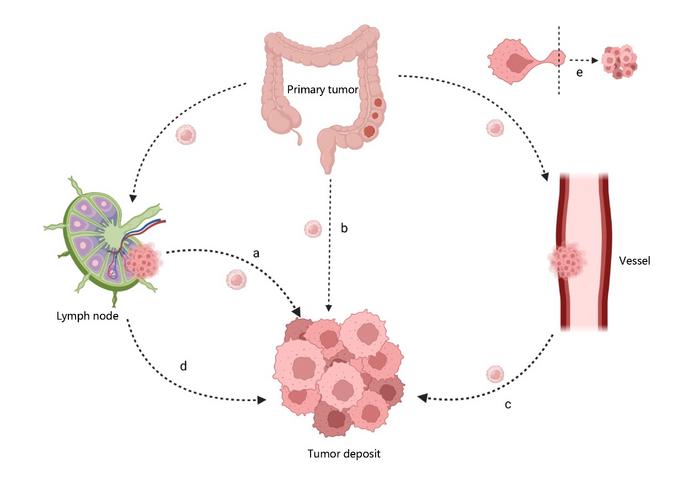Patient Factors Influencing Recovery Outcomes Following Hip Replacement Surgery
Hip replacement surgery, clinically known as total hip arthroplasty (THA), has revolutionized the treatment of advanced hip osteoarthritis, allowing millions of patients worldwide to regain mobility and reduce debilitating pain. Despite its widespread success, a significant subset of individuals continues to face persistent functional limitations and physical deficits following surgical intervention. These issues notably include […]


Hip replacement surgery, clinically known as total hip arthroplasty (THA), has revolutionized the treatment of advanced hip osteoarthritis, allowing millions of patients worldwide to regain mobility and reduce debilitating pain. Despite its widespread success, a significant subset of individuals continues to face persistent functional limitations and physical deficits following surgical intervention. These issues notably include muscle weakness, impaired mobility, and an increased susceptibility to falls, all of which can undermine the overall benefits of the procedure. Recent investigative efforts published in the Journal of Orthopaedic Research now shed light on a potentially pivotal factor influencing these disparate recovery trajectories: the preoperative quality of hip musculature.
In a detailed examination involving a cohort of ten patients scheduled for THA, researchers employed advanced imaging modalities to scrutinize the structural composition of hip muscles before surgery. Notably, these assessments focused on muscle fat fraction, an intriguing biomarker that provides insights into muscle integrity beyond mere bulk or volume. Patients exhibiting higher levels of intramuscular fat—indicative of poorer muscle quality—were found to demonstrate significantly impaired biomechanical performance during post-surgical functional tasks. Conversely, individuals with lower fat infiltration and thus better muscle composition experienced comparatively improved motor recovery. Curiously, the severity of osteoarthritic degeneration visible on standard imaging bore no relationship to postoperative physical outcomes, suggesting that muscle quality independently governs recovery dynamics.
The implications of this research are profound, emphasizing muscle quality as a critical, yet historically overlooked, determinant in post-THA rehabilitation. Magnetic resonance imaging (MRI), the primary tool used to characterize muscle fat fraction, reveals nuances of muscle tissue composition that traditional imaging cannot. Since preoperative assessment protocols rarely incorporate such detailed soft tissue analysis, many clinicians may remain unaware of the muscular factors predisposing patients to suboptimal recovery. As Dr. Jeannie F. Bailey of the University of California, San Francisco, articulates, incorporating MRI-based muscle quality evaluations could enhance predictive accuracy regarding post-operative functional outcomes and inform personalized therapeutic strategies to optimize recovery.
Mechanistically, fat infiltration within skeletal muscle is associated with diminished contractile efficiency, altered muscle metabolism, and impaired force generation. These factors collectively blunt the biomechanical capabilities of patients and impede the restoration of normal gait and stability post-surgery. Given that THA involves replacement of the degenerative joint rather than muscular reconstruction, the intrinsic state of periarticular muscles may critically mediate the rehabilitation trajectory. This recognition elevates muscle composition from a peripheral consideration to a central variable that warrants systematic evaluation before surgical intervention.
Beyond the immediate clinical relevance, this line of investigation contributes to a broader understanding of musculoskeletal resilience and adaptability. It aligns with an emerging paradigm in orthopedic science that transcends joint pathology to encompass the holistic condition of the musculoskeletal unit. Such an approach acknowledges that successful joint replacement outcomes depend not solely on prosthetic technology or surgical technique but also on the health and function of surrounding soft tissues, particularly musculature.
The study’s limited sample size warrants cautious interpretation; however, the consistency of findings across patients supports the validity of muscle quality as a meaningful prognostic marker. Future larger-scale studies are necessary to refine muscle fat fraction thresholds, optimize imaging protocols, and correlate these parameters longitudinally with functional milestones extending beyond the early postoperative period. Furthermore, investigations into adjunct therapies aimed at enhancing muscle quality preoperatively, such as targeted resistance training or neuromuscular conditioning, could revolutionize prehabilitation paradigms and reduce the incidence of functional deficits.
Integrating these insights into clinical practice may require reevaluating standard preoperative workflows to include muscle composition imaging and analysis. Additionally, collaboration between orthopedic surgeons, radiologists, physiotherapists, and rehabilitation specialists is essential to translate these findings into actionable care plans that mitigate postoperative risks. Such interdisciplinary approaches could facilitate early identification of at-risk patients and prompt initiation of personalized rehabilitation programs tailored to muscle condition.
This research also opens avenues for innovation in imaging technology and analytic software designed to quantify muscle quality more rapidly and cost-effectively. As MRI remains a relatively resource-intensive modality, advancements in ultrasound elastography or other non-invasive techniques could offer complementary assessments, broadening accessibility and enhancing clinical utility.
From a patient-centered perspective, awareness of muscle quality’s impact on recovery may encourage behavioral modifications and engagement in preoperative conditioning regimens. Educating patients about the importance of maintaining or improving muscular health before undergoing THA might empower them to participate actively in optimizing surgical outcomes and long-term mobility.
In conclusion, the identification of preoperative hip muscle fat fraction as a predictor for early biomechanical recovery following total hip arthroplasty represents a pivotal advancement in orthopedic research. By spotlighting muscle quality, this study challenges existing paradigms that predominantly focus on joint degeneration and underscores the multifactorial nature of functional restoration after surgery. As scientific and clinical communities delve deeper into muscle-centric evaluation and intervention, the potential to enhance patient outcomes and reduce postoperative complications promises to reshape the landscape of hip arthroplasty care.
Subject of Research: Hip muscle quality as a predictor of functional recovery following total hip arthroplasty.
Article Title: Early Biomechanical Recovery following Total Hip Arthroplasty is Associated with Preoperative Hip Muscle Fat-Fraction
News Publication Date: 23-Apr-2025
Web References:
Journal of Orthopaedic Research: https://onlinelibrary.wiley.com/journal/1554527x
DOI Link: http://dx.doi.org/10.1002/jor.26072
Keywords: Orthopedics, Surgical procedures, Magnetic resonance imaging, Osteoarthritis, Pain, Human mobility, Clinical studies
Tags: biomechanical performance in hip replacementfactors influencing hip surgery outcomeship musculature assessmenthip replacement recoverymuscle fat fraction biomarkermuscle integrity and recoveryosteoarthritis impact on recoverypatient mobility after surgerypersistent limitations after hip surgerypost-surgical functional taskspreoperative muscle qualitytotal hip arthroplasty outcomes
What's Your Reaction?

































